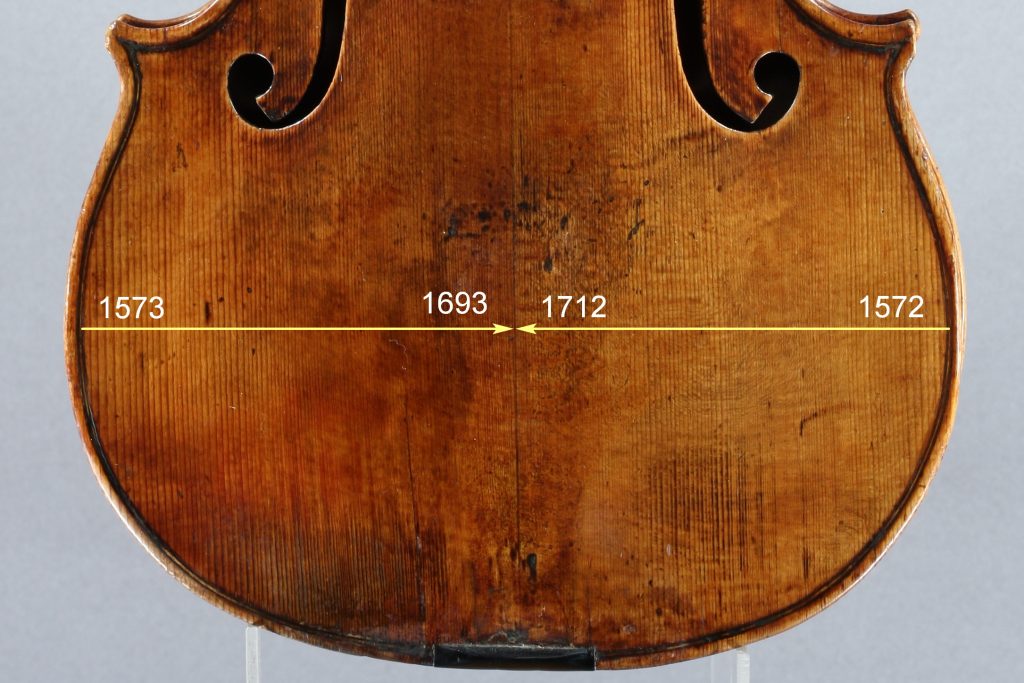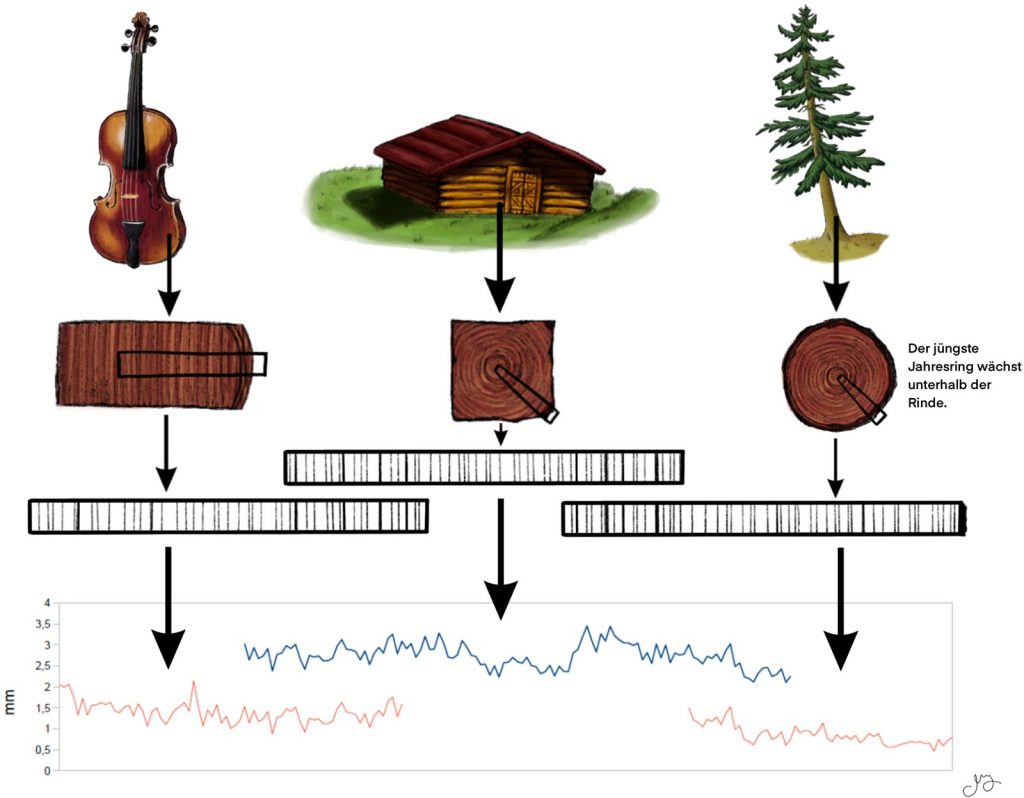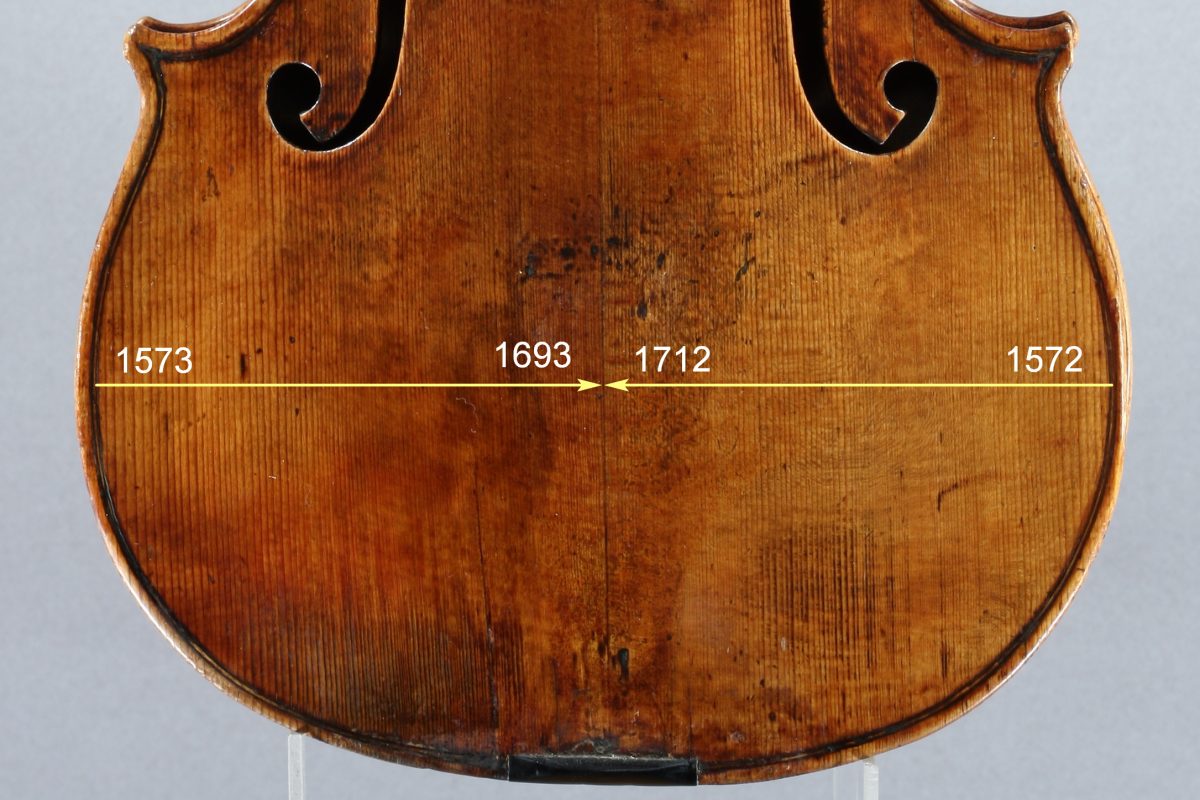Measure and compare
Calculate reference value
Often, the woods of an instrument are first compared to each other to determine the relative age difference. If the tree ring width sequences have a high similarity, i.e. a high correlation value, a mean value can be calculated from the sequences, which then serves as a reference for further analysis.
Comprehensive database
For the analysis, we use our own dendrochronological database, which is one of the most extensive in the world in our field. It includes measurements of violins, violas, cellos, double basses, guitars, lutes, viola da gambas, virginals, harpsichords, and pianos from over 500 instrument makers from the 15th to the 21st century - including more than 320 instruments by Stradivari alone.
The formula: Terminus post quem + 5
The dendrochronological analysis provides the earliest possible date of origin of the instrument, the so-called terminus post quem. However, at least two to five years should be added to this date in order to take into account the drying time of the wood and the loss of material during processing.

The example of the violin by G. Guarneri filius Andreae shown in the picture can be used to illustrate the procedure: The youngest annual rings are located at the joint of the two-piece top and date from 1693 and 1712, respectively. The violin can therefore have been made as early as 1712. If we add five years, we get 1717 as a realistic year of construction. This result supports the stylistic expertise, which assumes 1724 as the year of construction.
Made from the same tree?
Usually, the plates of a stringed instrument consists of two or more parts. The dendrochronological method can be used to determine whether these parts come from the same tree. The following criteria must be met in order for a same tree match to be considered:
- t-value greater than approx. 8
- Gleichläufigkeit (concordance) should be greater than 70%
- the graphs of the two parts should have very high visual similarity
- the graphs should have a similar beginning and end
- the widths of the annual rings should be very similar
- minimum overlap of about 70 annual rings.
A same tree connection can also exist in different instruments, as luthiers often bought larger quantities of tonewoods from one tree and used them to make several instruments. In Antonio Stradivari's oeuvre, there are many examples of such trunk similarities. (More on this on the Stradivari subpage.) The studies on same tree connections give a good impression of the drying time and material loss of tonewoods in the construction of stringed instruments.

